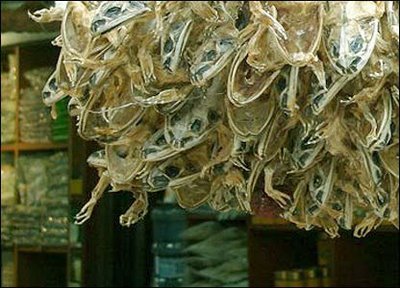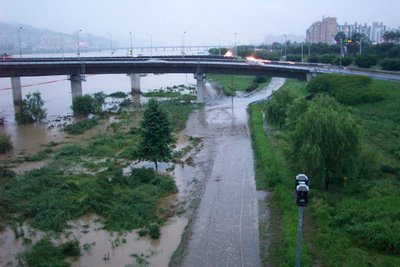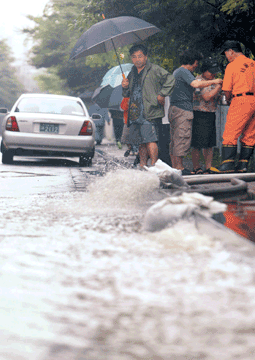Friday, July 21, 2006
Wednesday, July 19, 2006
Or Not???
BBC World
I just read on the Korean Times that Seoul was 8th on the list... what happened? Where did they get their stats???After 14 years as the world's most expensive city, Tokyo has been knocked off its top spot - by Oslo.
10 MOST EXPENSIVE CITIES
1st - Oslo, Norway
2nd - Tokyo, Japan
3rd - Reykjavik, Iceland
= 4th - Osaka, Japan
= 4th Paris, France
6th - Copenhagen, Denmark
7th - London, UK
8th - Zurich, Switzerland
9th - Geneva, Switzerland
10th - Helsinki, Finland
And... I guess it all depends on who is doing the survey, and what they include.
Oslo joins the group of most expensive cities in the world
By Tann vom Hove, Editor
London is the most expensive city in the world while Swiss cities are home to highest earners1 February 2006: Deciding on which is the world’s most expensive city is a little bit like choosing between the merits of various world heavy weight boxing champions. Until recently the choice has been between Tokyo and London. But in its latest ‘Worldwide cost of living survey’ the Economist Intelligence Unit (EIU) says Oslo had overtaken Tokyo as the world’s costliest city. And in June 2006, Mercer Consulting says Moscow was the most expensive city in the world, with Oslo being ranked 10th. Meanwhile, Swiss Bank UBS puts London in first place, followed by Oslo, New York and Tokyo.
A report by UBS
London is the most expensive city in the world due to the UK capital’s high cost of renting accommodation. If rents are excluded, Oslo, Copenhagen, Tokyo and Zurich are among the most costly cities in the world. In terms of living costs, Oslo remains the most expensive of the 71 cities surveyed, now followed by Copenhagen, Tokyo, Zurich and London.
...
Rank/City
1 London
2 Oslo
3 New York
4 Tokyo
5 Copenhagen
6 Hong Kong
7 Zurich
8 Paris
9 Chicago
10 Geneva
...
27 Seoul
Expensive??? Or Not?
By Ryu JinStaff Reporter Korea Times
Seoulites live in the world’s eighth most expensive city, according to a survey released by the Economist Intelligence Unit (EIU) on Monday.I don't think so.
It is the first time that Seoul has been placed on the top-10 list for the cost of living.
Oslo was in first place, followed by Tokyo, Reykjavik and Paris, in the survey conducted biannually by the EIU. Seoul was in the 16th and 13th place in August 2005 and January 2006, respectively.
...
I'm not sure what their criteria are. I suppose things like rent are very expensive, so they live in smaller homes. The fuel prices are also up there. Other things, though, I find to be lower than at home. The cost of food, for instance, is much lower than at home in Edmonton.
As a foreigner here, I find the cost of living to be very cheap. So many foreigners regularly go out for lunch and/or dinner, because it is so cheap. If you add in the time it takes to make a meal, and the cost of the food, it is much easier to just go to a little Korean restaurant for a quick, big, delicious, cheap meal. I also regularly take taxis here, as they are so readily available, and cheap (Korean's don't think so).
I think the standard (usually one room) school provided foreigner home in Korea costs the hagwons around 300,000 Won per month. Mine is a bit more at around 600,000 Won (or so I've been told), but I have a Korean home rather than a one room villa or officetel room.
I suppose it is difficult for many Koreans, as they don't really do mortgages here... you have to have the money up front. It is possible to get a loan, but you have some sort of collateral, or a huge amount of money to begin with.
I guess if you include the cost of all of the after school academies and hagwons that the parents send their kids to, the cost of living goes up quite a bit.
Tuesday, July 18, 2006
Still raining... and more to come
[Chosun Ilbo]
More Rains to Come as Korea Assesses Flood DamageThe rain front that unleashed torrential downpours across the nation over the last week will continue to influence the weather through the beginning of next week. With the remaining influence of the typhoon and the high chance that cold air from Manchuria will push down south, it appears that the front will not be able to recede northward.
...
[Chosun Ilbo]
Localized torrential downpours over the last four days left 19 dead and 31 missing, most in Gangwon Province. Altogether 2,902 people and 1,168 households became victims of floods that damaged 163 homes and flooded 1,506. Some 6,336 hectares of farmland were submerged, and 1,376 hectares swept away or buried. Some 127 roads were closed to traffic due to landslides.
...Roads near the Han River are partly submerged after torrential rains in Seoul on Monday morning./Yonhap
Yum... or not

Dried frogs
Dried frogs are extraordinary. Even Yoon Jung, our South Korean fixer, hated the idea of them. They are steeped in hot water to make a sort of stew or infusion and fed to sick children. There seemed to be some debate about whether they were used as a cure, or a threat.
Monday, July 17, 2006
The River
Still Raining!!!!!
The death toll from heavy rain rose to 20 yesterday after it swept through northern and central parts of the nation, causing massive floods and landslides in the regions. Another 32 are missing....On Sunday, heavy seasonal rains cracked part of the Anyang Stream enbankment in Yeongdungpo-gu, southwestern Seoul, flooding over 1,900 low-lying houses and apartments....
A resident watches water being pumped out of flooded residential areas in Yeongdeungpo, southwestern Seoul. [The Korea Herald]
The disaster authority issued an ``Orange'' crisis alert for the downpour in Seoul, Inchon, Kyonggi and Kangwon provinces in the morning, and a ``Yellow'' warning for other parts of the nation.
The colors indicate the seriousness of a disaster: Blue, Yellow, Orange to Red. Red is the most serious. An Orange warning is designated when a heavy rain alert is issued and extensive damage is expected. It is the first time the government has issued an Orange alert since adopting the warning system in 2004.
Heavy rain alerts in Seoul, Kyonggi and Kangwon provinces were eased to heavy rain warnings last night, but the regions will keep receiving rainfall until Tuesday. With the rain front moving southward alerts were issued for North and South Chungchong and North Kyongsang provinces.
In Kangwon Province, where more than 500 millimeters of rain fell, 32 people are listed dead or missing as of 10. p.m on Sunday. Most roads connecting the western and eastern parts of the province were cut by landslides and flooding. About 10,000 people were evacuated from their houses, and tens of thousands of households had electricity cut. Hundreds of residents were also isolated due to cut roads around their villages.
...
Residents of a village in Inje, after being evacuated from their houses due to rain, walk through broken trees and rubble that drifted from valleys in Kangwon Province, Sunday. [Korea Times]
The Olympic highway, one of the main roads of Seoul, is underwater after torrential rain in Seoul on Sunday./Reuters
Parking in Korea
For those living in the big apartment complexes, there are big parking lots. But, if you don't live there, you can't park there without special permission. They have parking attendants that keep a close watch on who is parking there. If there is a car that is not on their list, they stick a big yellow warning sticker on the window. The stickers are NOT easy to get off and require some chemicals and scraping.
Most of the main roads have no parking signs.
There are no no-parking signs in a lot of the residential areas. It is mostly 2 way streets, but there is barely enough room for one car to go through because in most cases, cars are parked on one or both sides. For the most part, I think those that live here have first dibs on the spots in front of their homes. If they are not there, you can park there. If they return and want you to move, they will phone you.
In Korea, everyone leaves their contact number (cell phone number) in the window. That way, if you are parked in someone's spot, or in someone's way, they can phone you. Some parking spots in the little villa homes around here, are set up so that one car parks behind another. If the inside car wants to get out, they have to phone the owner of the outside car to have them move it. I guess it would be a big problem if they were not around to move it.
In some of the big store parking lots, once they start getting full, the cars are parked behind and perpendicular to the other parked cars and set in neutral. When the other cars need to get out, that car is just pushed forwards or backwards out of the way.
You have to be very good at parallel parking in Korea, as they park almost bumper to bumper. In some cases, you have to phone to have cars moved, if they have parked too closely.
 I found this site and like the girl's art...
I found this site and like the girl's art...








 The Olympic Bridge
The Olympic Bridge


